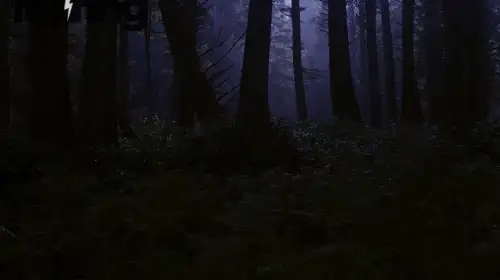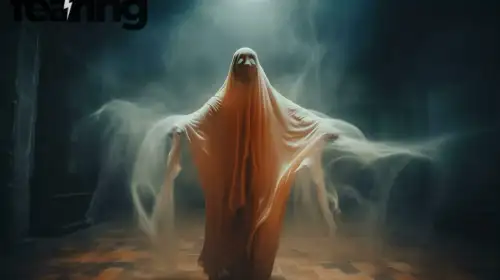Paranormal Investigations continue to bridge the line between science and superstition, between what can be measured and what can only be felt. In 2025, the field has evolved into a blend of physics, psychology, and technology — no longer just ghost stories told by candlelight, but data-driven efforts to decode the unknown. Modern teams rely on AI-based sound analysis, electromagnetic mapping, and infrared imaging to track phenomena that defy easy explanation.
Parapsychologist Dr. Dean Radin summarizes the field perfectly: “Whether ghosts are real or not is less important than the fact that millions of people experience them. That’s the real phenomenon worth studying.” His words capture the modern spirit of investigation — seeking understanding, not just proof.
From Séances to Science
What began in the 1800s as spiritualist rituals has become an intersection of multiple disciplines. The Society for Psychical Research—founded in 1882—was among the first to treat ghost sightings as data. Today, researchers use environmental sensors, digital recorders, and 3D scans to examine every unexplained event.
Paranormal teams now analyze airflow, temperature, and light fluctuations with the same rigor used in scientific labs. As skeptic and writer Sharon Hill puts it, “Good investigators aren’t believers or debunkers; they’re documentarians of uncertainty.”
Inside a Modern Investigation
Contemporary investigators follow a process closer to field science than myth-chasing. A typical investigation includes:
Historical Research — studying the site’s events, previous sightings, and structural details.
Baseline Readings — measuring ambient EMF, humidity, and temperature before any anomalies occur.
Controlled Testing — using cameras and recorders in both active and inactive rooms for comparison.
Data Analysis — reviewing hours of footage, sound, and sensor logs for measurable deviations.
Technology adds credibility, but human interpretation still drives conclusions. “A spirit box can’t tell you what you saw,” says investigator Amy Bruni, “but it can show you that something unusual happened when you did.”
The Science of Perception
Many Paranormal Investigations reveal more about how humans experience reality than about ghosts themselves. Low-frequency sounds, known as infrasound, can trigger anxiety and dread. Flickering light or high carbon monoxide levels can cause hallucinations.
Neuroscientist Dr. Olaf Blanke from EPFL found that stimulating certain areas of the brain can produce sensations of being followed or touched. “Our sense of presence,” he explains, “is constructed by the brain — and it can misfire.”
Still, science does not erase belief; it enriches it. As cognitive researcher Dr. Chris French notes, “Understanding perception doesn’t make experiences less meaningful — it just gives them context.”
The Tools of the Trade
The toolkit of a 2025 paranormal investigator looks like a mobile laboratory:
| Equipment | Purpose | 2025 Update |
|---|---|---|
| EMF Meter | Detects electromagnetic variations | AI-assisted filtering to reduce interference |
| Thermal Camera | Captures temperature anomalies | 3D thermal imaging with real-time data |
| EVP Recorder | Records unexplained voices | Noise reduction through adaptive algorithms |
| Full-Spectrum Camera | Sees in infrared and ultraviolet | Wider spectral range, higher contrast |
| LIDAR Scanner | Maps spatial depth and movement | Creates precise 3D environmental scans |
According to engineer Marina Lopez, “The line between paranormal research and environmental science is thinning. We’re measuring the same world — just asking different questions.”
When the Mind Becomes the Medium
Some of the most credible investigations include psychologists who study suggestibility—the human tendency to fill in gaps with imagined detail. Fear can heighten pattern recognition, causing people to perceive meaning in random noise.
In controlled studies, participants in dark rooms with EMF and sound stimuli often reported “presence” sensations even when no activity occurred. Paranormal researcher John Tenney comments, “The mind is a haunted house — sometimes, we’re investigating our own thoughts.”
Cultural and Ethical Dimensions
As the field professionalizes, questions of respect and cultural awareness have become central. Investigating sacred or historical sites requires permission and sensitivity. Some indigenous communities view spirit contact as sacred, not experimental.
Anthropologist Dr. Sarah Bartlett emphasizes, “Paranormal work can’t just be about thrills. Every culture has its own relationship with the dead — understanding that is part of the investigation.”
Many modern teams now collaborate with historians and cultural liaisons to ensure responsible research.
The Role of AI and Big Data
Artificial intelligence has revolutionized how evidence is analyzed. Rather than manually reviewing hours of footage, investigators use machine learning to:
Detect temperature or motion anomalies automatically
Cross-reference sensor data to eliminate false readings
Transcribe and classify EVP recordings by frequency range
Predict “activity windows” based on environmental patterns
“AI doesn’t prove ghosts,” says data scientist Dr. Lena Meyer, “but it helps us prove we’re measuring something unusual.” This analytical approach shifts the debate from belief to pattern recognition.
A Global Fascination
Streaming platforms have transformed paranormal research into cultural entertainment. Series like Ghost Adventures and 28 Days Haunted attract millions of viewers, turning once-niche investigations into prime-time phenomena.
A 2025 Statista study shows that 61% of Americans believe in spirits, and 37% report personal encounters with unexplained phenomena. These numbers highlight how deeply the paranormal resonates with modern identity and collective imagination.
Despite the rise in popularity, experienced investigator Grant Wilson warns: “Television compresses reality. Real fieldwork is hours of quiet waiting punctuated by moments of awe.”
What Drives the Search for the Unknown
At its core, Paranormal Investigation is about confronting mystery — the tension between logic and belief. Each investigation reflects humanity’s enduring need to explain the unexplainable. Whether the outcome is data or doubt, the pursuit itself is profoundly human.
Astrophysicist Neil deGrasse Tyson once said, “The universe is under no obligation to make sense to you.” The same applies to the paranormal; it challenges us to keep questioning, keep observing, and stay curious about what lies beyond ordinary experience.
FAQ
Q1: Are paranormal investigations scientifically accepted?
A1: While methods use scientific tools, reproducibility remains limited, so the field sits between science and philosophy.
Q2: What’s the most common explanation for hauntings?
A2: Infrasound, electromagnetic fields, and environmental contamination often explain sensations of “presence.”
Q3: How has AI changed investigations?
A3: It allows faster data sorting, anomaly detection, and cross-analysis — reducing human error and bias.
Q4: Can anyone become a paranormal investigator?
A4: Yes, but training in science, psychology, or data analysis is strongly recommended for credible work.
Sources
Society for Psychical Research Archives
Statista 2025 Paranormal Belief Report



